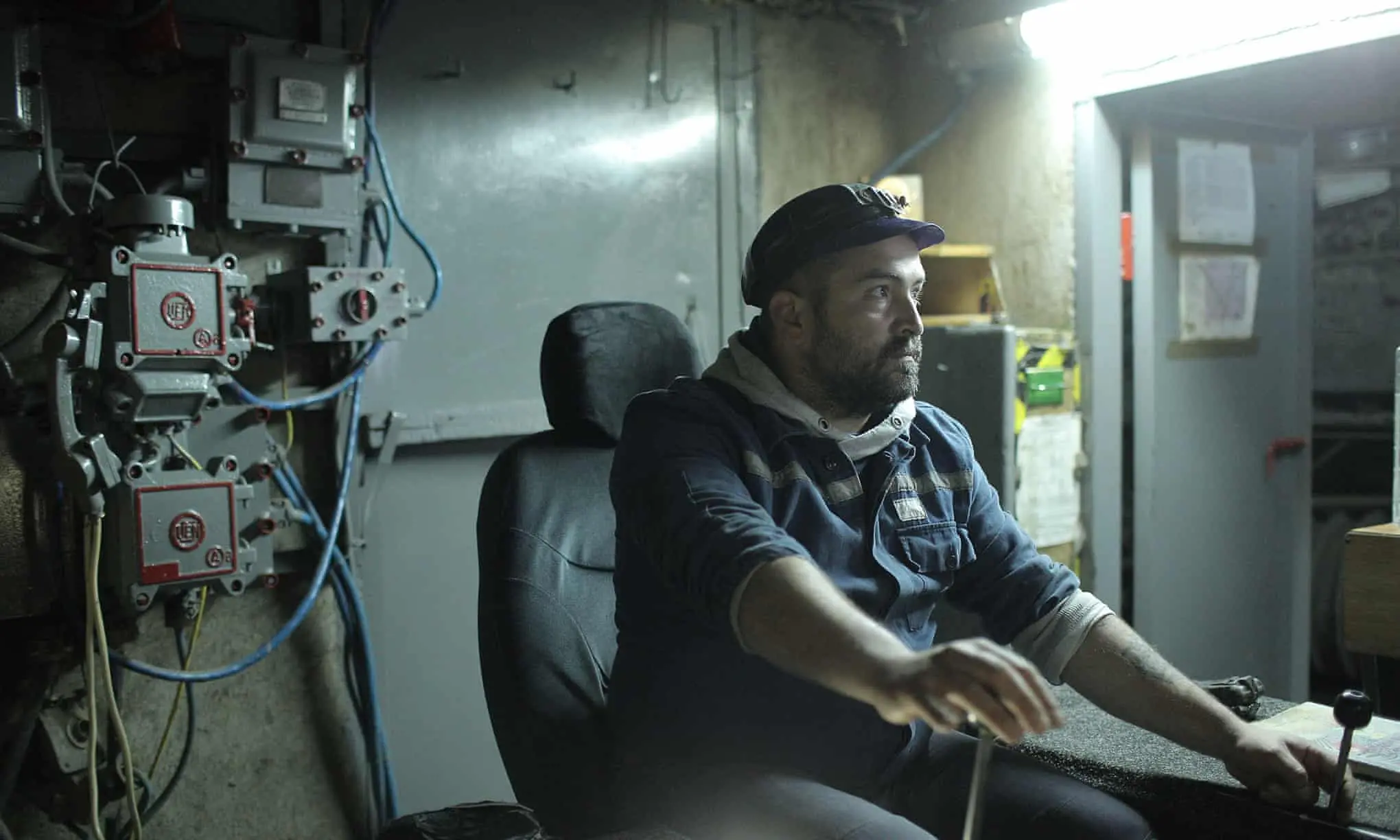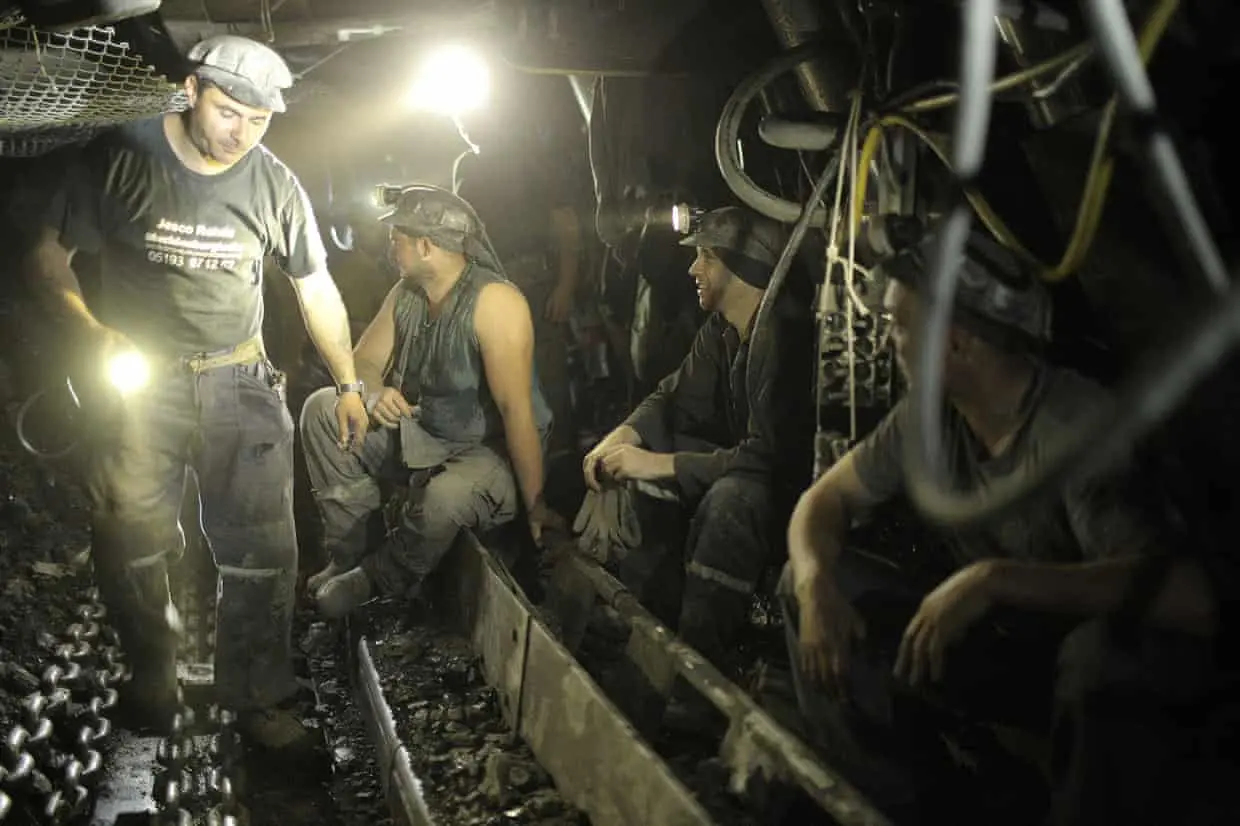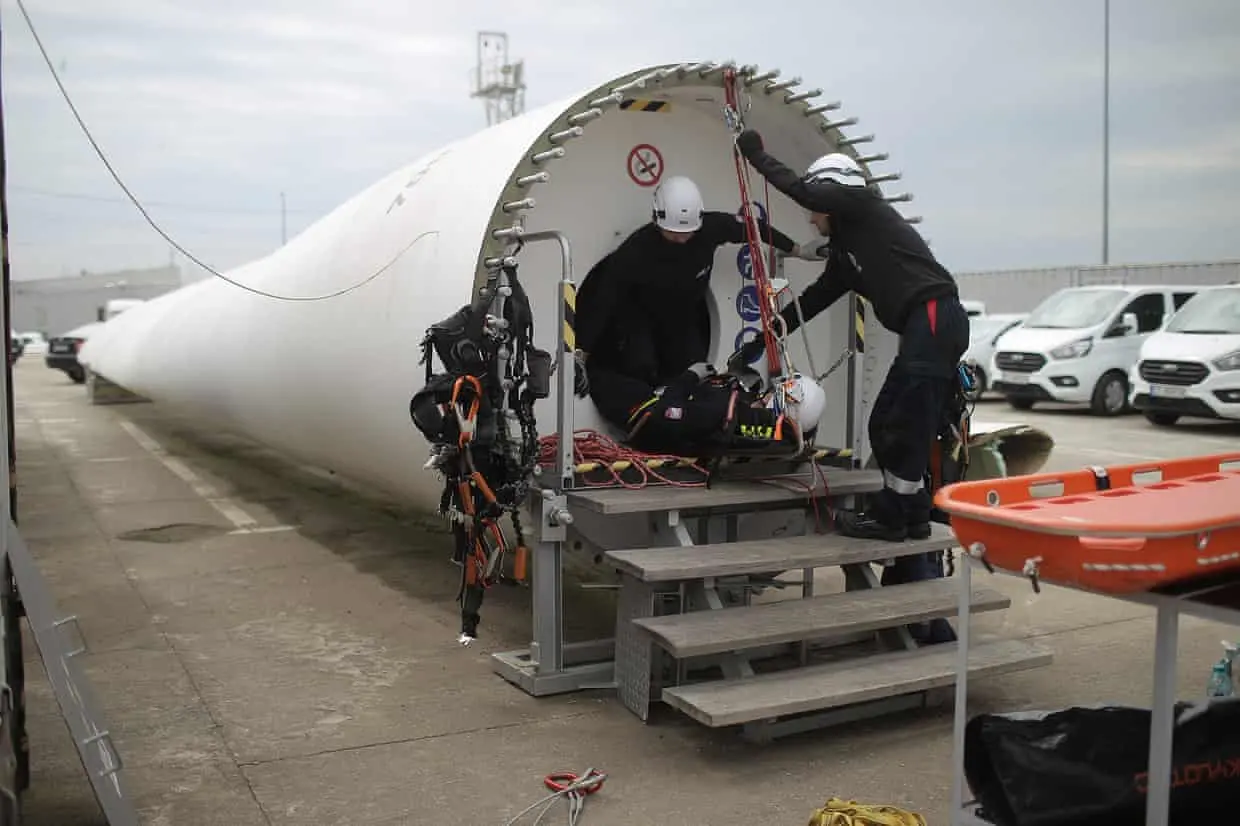
Three hundred metres below ground, Sebastian Tirintică operates an elevator at the Livezeni mine in Romania’s Jiu valley. His eyes widen with concentration as he guides the lever to lower the cage, ferrying the iron, wood, and other materials his co-workers need to extract coal. His focus keeps his fellow miners alive, which could be said for everyone working at Livezeni. Most of the equipment is more than 30 years old. Miners go underground knowing that a ceiling support could collapse or that a conveyor belt could snap. In seven years working inside the mine, Tirintică has been buried in coal three times. Each time, his co-workers pulled him out.
“Danger unites us,” he said. “The brotherhood of the underground. You know that your colleague behind you can save your life.”

As a nonprofit journalism organization, we depend on your support to fund more than 170 reporting projects every year on critical global and local issues. Donate any amount today to become a Pulitzer Center Champion and receive exclusive benefits!

Outside the mine at an institutional level, he says, there’s no one to watch his back. Coal has been on the decline for 30 years with little else created to replace the lost jobs. In the mid-1990s, 15 mines in the Jiu valley employed 45,000 people. Now, only about 3,000 workers remain in four mines: Livezeni, Vulcan, Lonea, and Lupeni. They are all scheduled to shut by 2030, as Romania strives to meet the EU climate targets. Coal makes up about a fifth of the country’s energy supply, less than wind and solar combined.
But as operations close, people in these monotowns reliant on the coal industry are left with few options other than moving away to find decently paying work. Many have already left. In Tirintică’s five-storey apartment building, almost half of the homes are empty.
“We need something to replace mining jobs with,” Lucian Enculescu, the leader of the Livezeni ‘Libertatea 2008’ union said. “Anything.”
Multiple EU funds will begin to distribute money in an effort to help countries phase out coal and facilitate a “just transition” to clean energy. But currently, only one programme is under way in the valley: a training centre about to open in the city of Petroșani, the closest town to Livezeni. It aims to re-skill 200 people in the next two years as wind turbine technicians. The project is run by the Renewable Energy School of Skills (RESS) with the support of the Romanian Wind Energy Association.

The centre, which began operations at the end of September, is funded through the Human Capital European programme. It is the pilot project of a larger proposal to reskill 8,000 miners and other people in the valley over the next 10 years, a goal that could be achieved using EU funds, said Sebastian Enache, senior managing director of RESS.
“We have the commitment of the industry that those who will graduate from the academy will have priority on the job market,” Enache said.
The one- to four-month training programme, valued at about €8,000 (£6,828), is free for miners to take part in. The course certifies them to work on turbines across Romania and abroad.
“This reskilling programme is maybe the best thing that has happened in the Jiu valley in the past 10 years,” said former miner Adrian Borbel, now a wind energy technician trainer. “Wind energy offers jobs that allow people to support their families, even if there’s only one person working in that family.”
Tirintică and his fellow miners are aware that coal is on its way out and they welcome the new programme, saying they are eager to learn, and that the wind energy jobs suit them. After mining with decades-old machines, the state-of-the-art wind turbine equipment feels like a luxury.
“Many people ask: wouldn’t you be afraid to work on a wind turbine?” he said. “How can I be afraid to work 100m above the ground? Inside the mine, I go 300 metres below ground every day.”
But while there is enthusiasm for the wind energy training programme, miners say it is not perfect. The valley is not suitable for wind energy, so anyone who wants to work in the industry will have to leave. Many miners say the wages offered by the renewable sector are not high enough to compensate them for the time spent away from their families. Tirintică already took a wind industry reskilling course, and said he was offered €1,350 a month take-home pay to work as an entry-level technician. That would be more than the €600-800 he makes at the mine, but it would also mean spending half of the year away from his home and family, giving up on his side hustles and paying rent, possibly in a city with a higher cost of living than the Jiu valley.
The training is designed to provide miners with hands-on experience so their starting salaries can match their mining pay. In time, graduates from the programme could earn up to €5,000 a month, Enache argues. But the necessity of taking time to build a career in renewables collides with the miners’ need to earn money in the short term. Some said that if they have to be away from their family anyway, they might consider taking other better-paid jobs. Working in construction or picking asparagus in Germany pays €2,000-2,800 a month.
For people such as Tirintică, who have families in the valley, mining has always been a profession chosen out of economic logic. He grew up hearing stories about working underground from his father and did not want to join their ranks himself. But since most employers in the region only offer €300-400 a month, he saw the mine as his only route to financial stability.
For decades, the local economy has been dominated by a single industry: coal. The incoming European money aims to diversify the region. Romania can access around €2 billion from the EU’s Just Transition Fund. That process starts with creating specific plans for the country’s coal regions, including the Jiu valley. The European Commission hired the consulting firm PwC to run the planning process, and the consultants have held multiple meetings and workshops with local stakeholders, including mayors, union leaders, priests, and NGOs. However, the miners say the consultants have not spoken to a single frontline worker.
The most recent draft proposes to remake the economy, build infrastructure, improve quality of life, and support local entrepreneurship. It calls for programmes to attract international investors, to build centres where people could train for careers in technology and other industries, and to develop tourism in the region. How those plans are implemented remains an open question.
“Everybody asks: Why don’t investors come?” said Florin Tiberiu Iacob-Ridzi, mayor of Petroșani. “We are 100km away from any highway. The Jiu valley is a bit isolated.”
Until a strategy is implemented, the miners are left to find solutions on their own, knowing that their employment could end soon. Those close to the retirement age of 45 plan to take the government’s €10,000 buyout, which is periodically offered in a bid to reduce the number of jobs relying on coal. In addition to the lump sum, they rely on the generous pension given for dangerous working conditions. Younger miners are forced to come up with their own backup plans. Some already work second jobs on top of their mining shifts, doing repairs, laying floor tiles, or driving delivery trucks.
Mădălin Brândău, who has been a miner for six years, recently took a wind energy course on working at heights, taught by the same organisation that opens the Petroșani centre. At the moment, he says the mine is the best option and has not signed a contract to transition to renewables yet. He knows, though, Romania’s coal phase-out date is near, and he’s making backup plans.
“I’m preparing for when the mines close,” he said. “I did a welding course. I got my truck driving licence. I took every possible course that was available. When the mines close, I’ll put all my certifications on the table.”
If possible, he wants to stay in his home town, where he is the lead singer of a traditional Romanian band that has other miners.
For now, with few other lucrative jobs, miners such as Tirintică and Brândău continue to go underground hoping they will emerge alive at the end of their shifts.
“As a child, seeing how many accidents and explosions kept happening, I cried into the night praying to God to close the Petrila mine where my father worked,” Brândău said. He still has not told his mother that he works as a rescuer, going inside the most dangerous underground areas to save his colleagues or put out fires.
The wind energy courses in Petroșani will begin by the end of the year, but the Jiu valley’s future remains uncertain.
“We know what we should do,” Iacob-Ridzi, the mayor of Petroșani, said. “But nobody knows how we should do it.”












